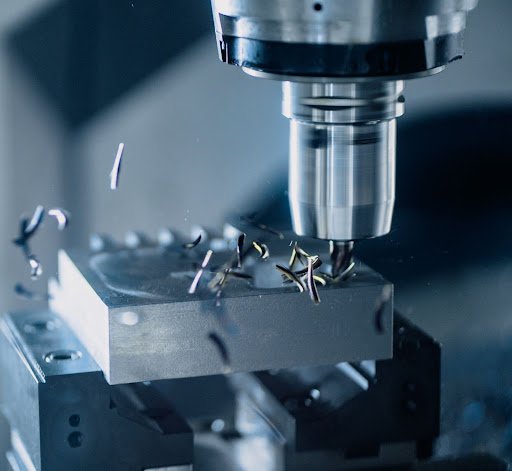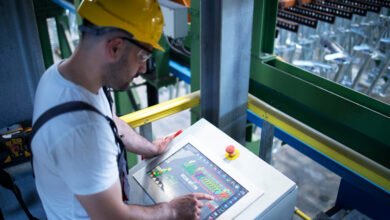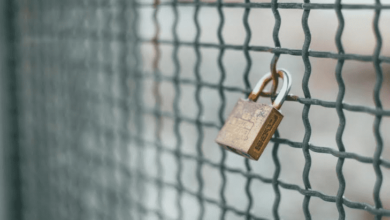CNC Rail Kits: What Are They and How Do You Use Them?

In modern manufacturing, precision is the key, and its heart is computer numerical control (CNC). CNC machine drills, cuts, grinds, lathes, and mills wood, plastic, and metals to certain dimensions using computer codes. While codes are essential, maneuverable CNC tools require rail kits to work precisely. CNC linear rail kits come in many sizes and are equipped for different uses. Unfortunately, most people often overlook their importance. Here’s what you need to know about CNC rail kits.
Table of contents
What are CNC rail Kits?
Advantages of using CNC rail kits
CNC rail kits buying options
How do you use CNC rail kits?
Types of CNC linear rail kits
What have you learned?
What are CNC rail Kits?
If you are a manufacturer, the only way to move things across the floor with little hindrance from friction to precise locations is using a rail system. A rail system has two major components, the rail, and the locomotive. The locomotive moves effortlessly on the rail. This is basically the same concept used by linear rail kits in CNC.
The kit allows CNC machines to move along the Y and X axis, and it may be called the linear guide, linear guideways, or linear slides. Whichever your preferred name, linear rails move machines as shape metals. A linear kit is a relatively simple tool. The only complexity comes when CNC computerization comes into the mix. Here, it must move the machine to a precise location within.
Fortunately, automation can determine the distance and the power of a machine of the linear rail. So, computer codes will work out how far a machine will move the rail. The rail will not only provide the machines with a calibrated path but also performs secondary duties such as supporting lateral loads.
Advantages of using CNC rail kits
If you’re looking for a quick and easy way to add linear motion to your CNC machine, a CNC rail kit is the way to go. Rail kits come with everything you need to get started, including the rails, brackets, end caps, and screws. End caps are usually made of soft plastics and installed at the end of the rails to stop the machine from leaving the rails.
Here are some of the advantages of using a CNC rail kit;
- It’s easy to install
- They’re strong and durable.
- They can be installed in any configuration.
- They come with an assortment of brackets that will accommodate most machines.
- You can upgrade or modify them as needed without having to purchase a whole new set -If your CNC machine moves too much on the rails, you can tighten the bolts at either end.
CNC rail kits buying options
If you’re looking for a CNC rail kit, there are a few things you should keep in mind. First, decide on your CNC machine’s needs. There are three main types of CNC according to how its rail needs: horizontal, vertical, and gantry rails. Though they all function similarly, manufacturers have calibrated the rails to work on a different axis.
Second, consider the size of the kit. Most CNC rail kits come in a few inches wide and up to 30 inches long. Thinner and shorter kits are for light duties and working on wood and plastics. However, if strengthened, it can work on microscopic metallic parts. For example, high-grade surgical instruments, components of pacemakers, and minute implants.
Third, consider the price. CNC rail kits range from a few tens of dollars to several thousands of dollars. A kit with a square rail is slightly expensive because the rail bears more weight than a circular rail. Other factors that may determine price include; the type of metal used, the complexity of the rail, and the brand.
To stay within your budget, online wholesalers avail the kit at a pocket-friendly price. Furthermore, the more you buy, the better the deal.
How do you use CNC rail kits?
A CNC rail kit comes with a linear metal rail, blocks, and several roller slides or ball bearings with predrilled holes. The linear rail is safely bolted or screwed on the chunk while the main cutting head is screwed on the slides. The cutting head will move horizontally or vertically using roller slides on the rail, depending on the machine’s design.
Please note that with advancements in CNC machining, how rails are assembled and used varies greatly. It is better to consult the manufacturer’s manual before buying and mounting a rail kit.
Types of CNC linear rail kits
There are four main types of CNC rail kits: round, v-slot, t-slot, and square. Round rails are the most common type of rails used in CNC machines. V-slot rails have a groove that allows the v-wheel to grip the rail tightly, making them ideal for use in areas where vibration is an issue. T-slot rails have a T-shaped groove. Like V-slots, T-slots have a specialized slide that can only be fixed from an open end. Once the slides are on, you can mount various cutting tools. The T-slot rail offers an indomitable grip and is excellent for heavy-duty roles. Furthermore, they work with special fasteners and expect them to last long.
If you are cutting aluminum or stainless steel on your CNC machine, it would not be advisable to use round rails because they do not provide enough support. Instead, you should opt for either t-slot or v-slot rails.
Square rails offer the best support and are the strongest. A hardened square metal rail can support up to 750 pounds earning it uses in literally any CNC industry.
What have you learned?
A CNC rail kit is a versatile tool that can be used for a variety of applications. If you’re thinking about starting a business or are looking for a way to streamline your manufacturing process, a CNC rail kit might be the perfect solution. The kit has a straight metallic rail and mobile roller slides that move along the rail.
To purchase a kit, consider the price, size of the rail and slides, brand, and type of metals used. Kits made from carbon steel and surface chrome plated against rust are slightly pricier and more durable. Visit online wholesalers to get linear rail kits at affordable costs.
Also Read: Where To Buy Smart Pills Online.




